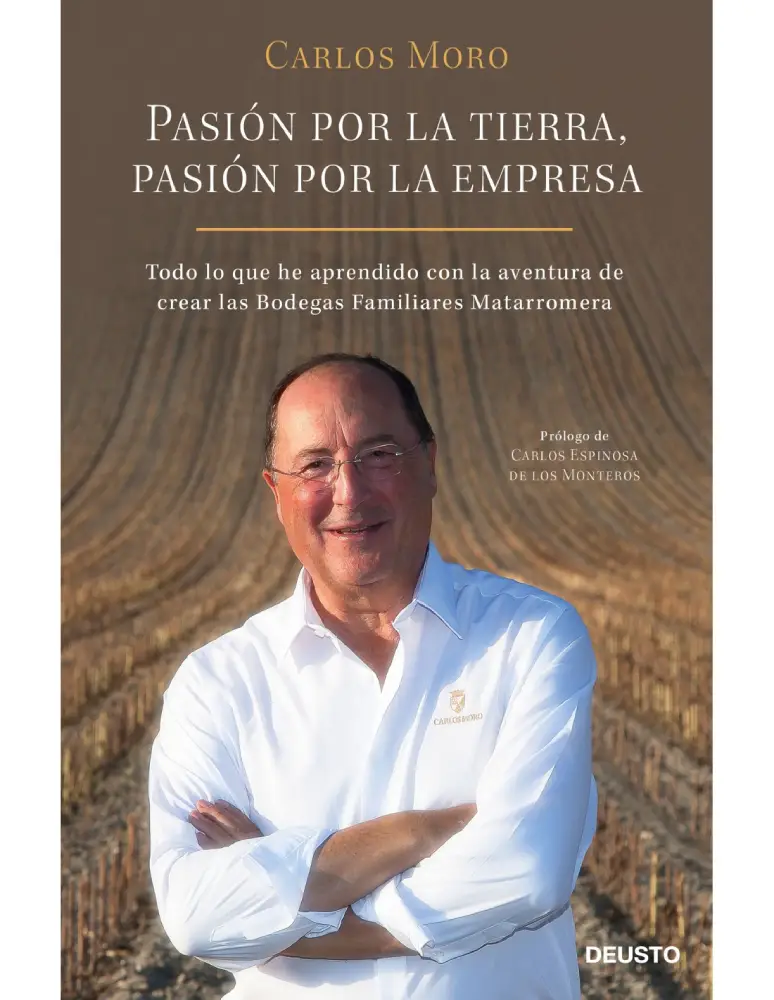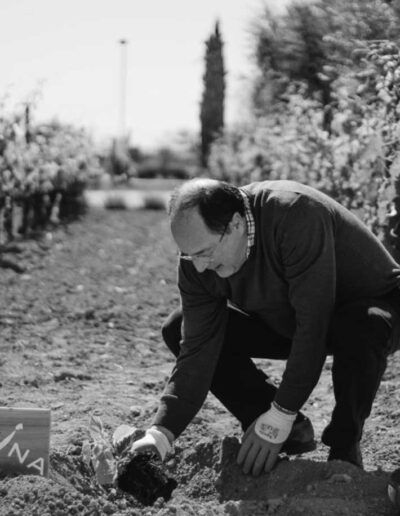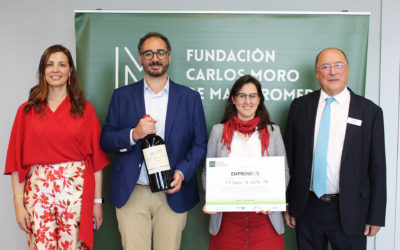CARLOS
MORO
“Viticultor y bodeguero. «Hay que vivir disfrutando con lo que hacemos»”
Carlos Moro
Mi historia
Carlos Moro (Valladolid, 1953) es ingeniero agrónomo y, como sus antepasados, viticultor, enólogo y bodeguero. En 1988, continuando con la tradición, fundó Bodega Matarromera, ubicada en la Ribera del Duero. En la actualidad, la compañía Bodegas Familiares Matarromera, de la que también es presidente, está presente en seis denominaciones de origen de reconocido prestigio, como son: Ribera del Duero, Rioja, Rueda, Toro, Cigales y Ribeiro.
Además de la viticultura, sus empresas apuestan por la biotecnología, el enoturismo, y elaboran productos como aceites, cosméticos y vinos sin alcohol. Carlos Moro es reconocido como uno de los empresarios españoles más innovadores y comprometidos de España y ha recibido numerosos reconocimientos y premios por su labor empresarial. En 2016, su fomento de la investigación y el desarrollo fue galardonado con el Premio Nacional de Investigación otorgado por el Ministerio de Economía y Competitividad y entregado por SSMM los Reyes de España.
La sostenibilidad, desde dos puntos de vista: La lucha contra el cambio climático y el desarrollo de productos más naturales, orgánicos, saludables y ecológicos, es junto con nuestra apuesta por la I+D+i dos de nuestras características principales. Para una empresa como la nuestra, que vive de la tierra, sostenibilidad e innovación es un compromiso y una actitud.
Descubre
Mis raíces
Hijo, nieto y biznieto de viticultores y bodegueros, la trayectoria personal y profesional de Carlos Moro está plagada de acontecimientos. Nacido en Valladolid en 1953, creció rodeado de viñedos y con un contacto y apego permanente a la tierra. Se desplazó a Madrid para iniciar una carrera universitaria que le llevó a convertirse en apenas unos años en Ingeniero Agrónomo, Diplomado en Economía de la Empresa, Diplomado en Economía de la Pyme, Máster en Tecnología de la Información y de las Comunicaciones, además de realizar los cursos de Doctorado de Enología y Viticultura.
Reconocimientos
2004
Premio XXI Certamen Empresario Agroalimentario del Año de la Facultad de Empresariales y Premio CECALE de ORO.
2014
Premio de Honor al Mejor Empresario del Año UVA
2015
Medalla al Mérito Turístico en Sostenibilidad y Calidad
2016
Premio Nacional de Innovación
Otorgado por el Gobierno de España y entregado por sus SSMM los Reyes de España, reconoció el trabajo de toda una carrera y trayectoria dedicada a la investigación para seguir creciendo y mejorando cada día.
2018
Premio Mejor Empresario Gastronómico del Año La Razón
El periódico dirigido por Francisco Marhuenda, cabecera de referencia en nuestro país, alabó también la labor de nuestra empresa por su aportación a la gastronomía.
2018
Espiga de Honor en Cine&Vino de la Seminci
El Festival de Cine que acoge la ciudad de Valladolid manifestó nuestro sentido y olfato empresarial, además de la sensibilidad de la compañía a través de la solidaridad y nuestra apuesta por la I+D+i.
2020
Premio al Mérito Enoturístico de ACEVIN
La Asociación Española de Ciudades del Vino destacó nuestra trayectoria, carácter visionario y espíritu emprendedor.
2021
Premios Industria Conectada 4.0
Finalistas a estos galardones del Ministerio de Industria, Comercio y Turismo que reconocen el esfuerzo en transformación digital de la compañía y su apuesta sostenible.
2021
Alcaide de Honor 2021 del Museo Provincial del Vino
El reconocimiento, concedido por la Diputación Provincial de Valladolid, destaca la decisiva contribución de Carlos Moro como embajador de la provincia, impulsor del sector vitivinícola y defensor del entorno.
2022
Premios PYME del año
Bodegas Familiares Matarromera ha recibido el Premio concedido por la Cámara de Comercio de España, la Cámara de Comercio de Valladolid, el Banco Santander y El Norte de Castilla. El galardón reconoce el esfuerzo de la compañía presidida por Carlos Moro en materia de sostenibilidad, innovación, internacionalización, empleo y RSC.
2022
Premio Mapfre Mejor Iniciativa Agropecuaria
Su Majestad la Reina Doña Sofía el premio a la Mejor Iniciativa en el Sector Agropecuario, un galardón, que tiene carácter bienal y que ha reconocido el compromiso con el territorio, la innovación y la sostenibilidad de una empresa con más de 30 años de trayectoria.
Además de estos premios a título personal y de numerosas medallas de oro y de plata que han obtenido nuestros vinos, en Bodegas Familiares Matarromera contamos un equipo de excelentes profesionales y hemos logrado un extenso número de reconocimientos en nuestra empresa que puedes ver aquí.

Descubre las
CREACIONES
Carlos Moro ha creado uno de los grupos bodegueros cualitativos más importantes a nivel nacional e internacional, caracterizado por la pasión y cuidado de la tierra, la innovación permanente y la búsqueda de la excelencia como norma de la casa.
ACTIVO, CURIOSO Y AMANTE DE LA INVESTIGACIÓN
PUBLICACIONES
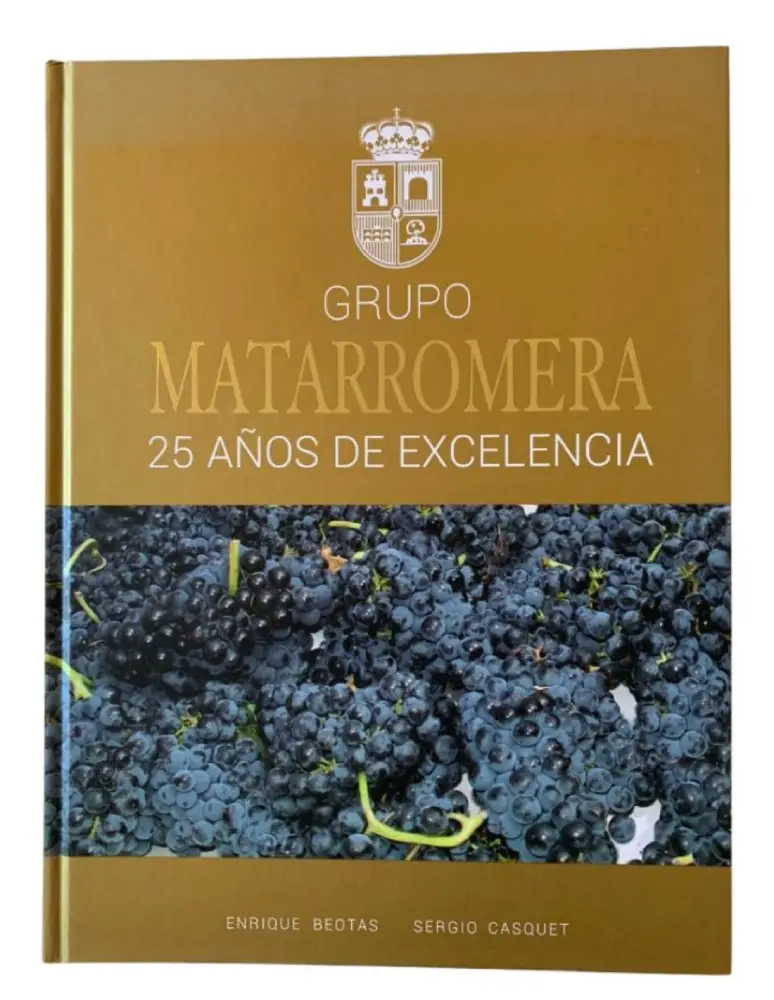
Matarromera 25 aniversario
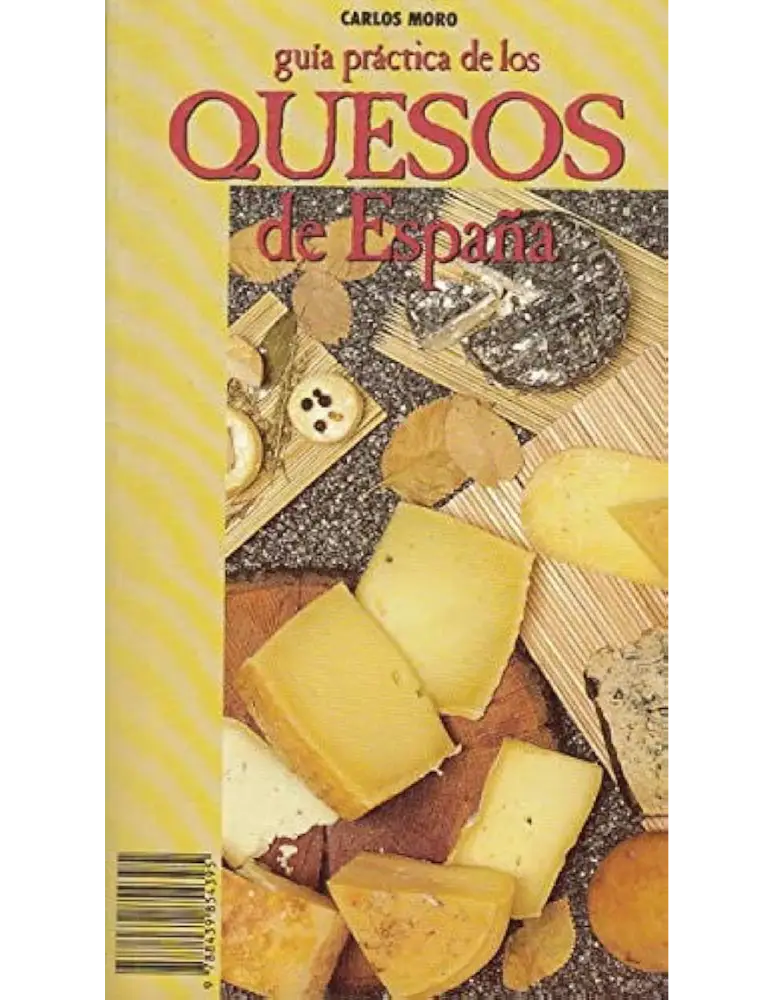
Guia práctica de los quesos de España

Los quesos de Valladolid
Matarromera
COMPROMETIDOS
Desde siempre he tenido claro que cuando nos unimos, las personas somos capaces de mucho más. Mi participación en colectivos y organizaciones ha sido y es una constante.

Descubre todas las
Noticias y novedades
GRUPO ALIMENTARIO CAMPOS DE CASTILLA 1986 SE ALZA COMO GANADORA DEL PREMIO EMPRENDES DE LA FUNDACIÓN CARLOS MORO DE MATARROMERA
La empresa de Mucientes (Valladolid), ha resultado ganadora del premio, valorado en más de 30.000€ La Fundación Carlos Moro de Matarromera ha...
FUNDACIÓN CARLOS MORO DE MATARROMERA PREMIA LA INNOVACIÓN DE TRES EMPRENDEDORES
La Fundación Carlos Moro de Matarromera ha celebrado hoy en Bodega Emina el evento de preclasificación de la I Edición de los Premios Emprendes, que...
CONVOCADOS LOS PREMIOS EMPRENDES PARA PROMOVER EL DESARROLLO ECONÓMICO DE LAS ZONAS RURALES
Fundación Carlos Moro de Matarromera y ATA convocan la I Edición de los Premios EmprendES Estos premios valorarán el carácter innovador y la...
¿Te animas a colaborar?
En nuestra Fundación tenemos el firme convencimiento de que los retos, desafíos y proyectos desarrollados en equipo siempre son más satisfactorios y enriquecedores. Por eso estaremos encantados de conocerte y estudiar juntos vías de colaboración.
